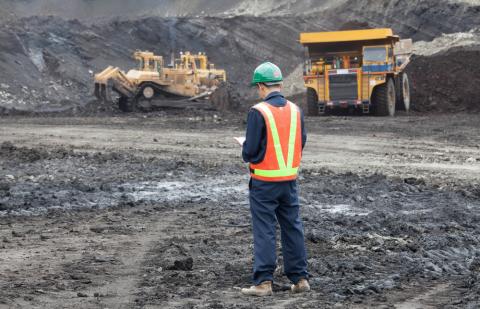Building a New Coal Mine in Alaska Is as Crazy as It Sounds
The U.S.—indeed the world—does not need another coal mine to supply an already oversupplied seaborne thermal coal market.
That’s what our research has shown for quite some time now and it’s why we filed a letter this morning with the Alaska Department of Natural Resources explaining why the proposed Chuitna mine just southwest of Anchorage is a white elephant in the making.
The force behind the project, Delaware-based PacRim Coal Co. (owned by a pair of Texas billionaires), has promoted it as a source of economic development, job creation and royalty payouts to state government.
The truth, as we explain in our letter, is that the financial model on which the Chuitna coal model is based is illusory (and there are surely better ways to use Alaska’s natural resources, as noted this week in an excellent Alaska Dispatch News op-ed).
Some of the things PacRim’s people are saying about the project are simply untrue.
For instance, we hear about how PacRim touts the coal that would come out of Chuitna for its superior low-sulfur content, when in fact it’s sulfur content is no different from that found in coal produced in the Powder River Basin in the Lower 48. This is worth emphasizing because all of the Powder River Basin coal producers today are struggling to find export markets for their product. Chuitna coal would face a similar uphill battle, and market forecasts see little demand growth for U.S. coal exports into the foreseeable future.
PacRim would also face competition from non-U.S. coal producers. Indonesian and Russian coal products are of similar low-sulfur content and similar heat content. Coal produced in each of those countries more often than not has a distinct transport-cost advantage because it is mined closer to China, India, Taiwan, Japan and Korea, which is where the coal-import action—such as it is—can be found. The entire market is oversupplied and coal producers from South Africa, Australia and Colombia are also looking to ship coal to already crowded Asian markets.
THE CHUITNA MINE IS BEING PROMOTED AS A FEEDER MINE TO THOSE SAME ASIAN MARKETS, WHICH ARE ALL WRAPPED UP INEXTRICABLY, FOR BETTER OR WORSE, WITH CHINA AND INDIA. These are the two most-populous countries in the world and both over the past several months have adopted or begun to adopt very deliberate and aggressive policies aimed at reducing coal imports.
China and India, to put it bluntly, don’t want Chuitna coal, and neither does anybody else.
The letter we filed today expands on one we filed in April that laid out the harsh economics of coal markets today. The seaborne thermal coal market has entered a steep structural decline—not a cyclical one—and established producers, including Usibelli Coal Mine Inc., the sole coal producer in Alaska, are scrambling hard for whatever market share they can hang onto.
Recent published reports note that Usibelli has lost 57 percent of its production since 2011. Most of the loss can be attributed to diminished demand from abroad.
There’s no place in the marketplace for the Chuitna project, and there’s no indication there ever will be.
Tom Sanzillo is IEEFA’s director of finance.











